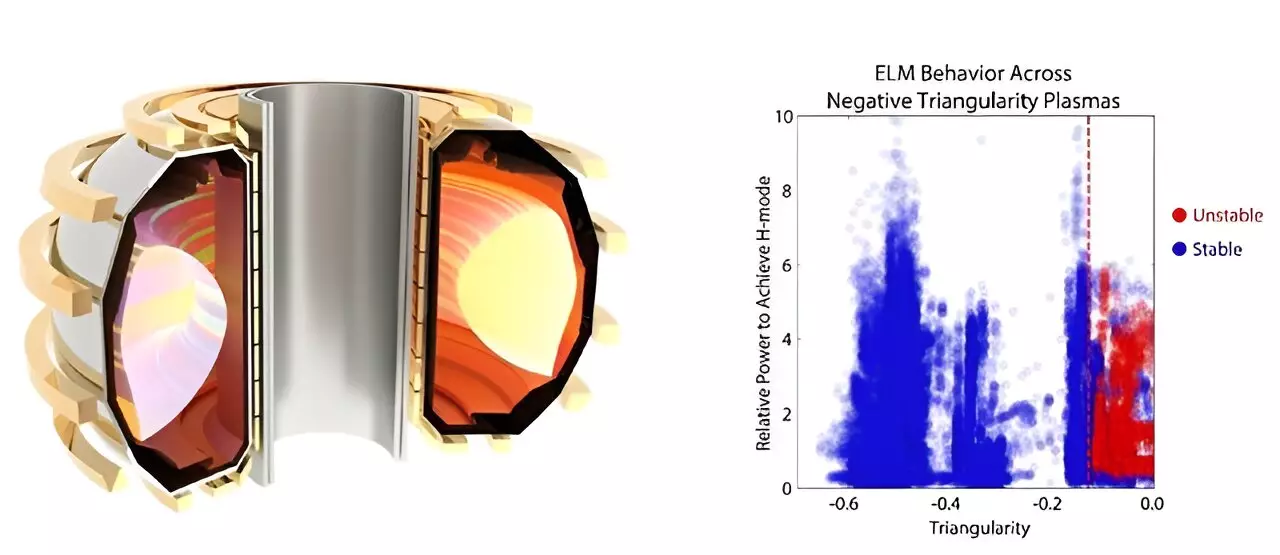Fusion power plants hold the key to sustainable and reliable energy generation in the future. However, achieving commercially viable fusion reactions requires overcoming various challenges, including plasma instabilities such as edge localized modes (ELMs). Recent research has explored the use of negative triangularity plasma shaping as a potential solution to this issue.
Plasma triangularity refers to the deviation of the plasma shape from an oval shape. While most studied plasmas have positive triangularity with a D-shaped cross-section, researchers have recently focused on negative triangularity, where the vertical portion of the “D” is near the outer wall. Negative triangularity plasmas have shown self-regulation of gradients, which can impact the development of instabilities.
Research Findings
Studies conducted at the DIII-D National Fusion Facility have demonstrated that negative triangularity shaping can stabilize instabilities in the plasma edge. By analyzing a range of plasma conditions, researchers found that plasmas with strong negative triangularity were free of instabilities, even under high heating power and core performance. This inherent stability was consistent across different experimental conditions, highlighting the potential of negative triangularity shaping in fusion power plant design.
The research on negative triangularity shaping has shown that it can limit the development of ELMs in a more robust manner compared to other approaches such as resonant magnetic perturbations. This suggests that negative triangularity shaping could be a more effective and reliable method for overcoming plasma instabilities in fusion reactors.
The findings from this study indicate that negative triangularity plasma shaping has the potential to address the challenges associated with plasma instabilities in fusion power plant design. By stabilizing the plasma edge region without compromising fusion performance, negative triangularity shaping offers a promising approach for future fusion reactors.
The research on negative triangularity plasma shaping represents a significant advancement in fusion power plant design. By demonstrating the inherent stability of negative triangularity plasmas and their ability to limit instabilities in the plasma edge, this study paves the way for further exploration and implementation of this innovative approach in the field of fusion energy.



Leave a Reply